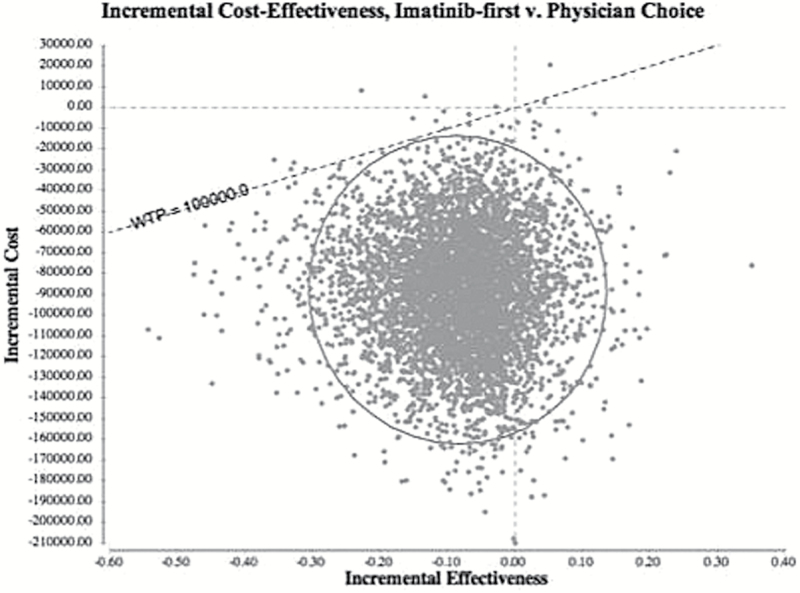Figure 2.
A Bayesian multivariable probabilistic sensitivity analysis found imatinib-first to be cost-effective compared with physician’s choice in 99.7% of 10 000 Monte Carlo simulations. The circular line indicates the 95% confidence interval of incremental cost-effectiveness ratios (ICERs) among simulations, and the dotted diagonal line indicates the willingness-to-pay threshold, which has a slope of $100 000/QALY. Simulations appearing below this line favor the imatinib-first strategy as cost-effective. Incremental effectiveness along the x-axis is measured in units of quality-adjusted life-years (QALYs). Incremental cost along the y-axis is measured in units of US dollars ($), adjusted for inflation to 2013. The ICER of each simulation is calculated as a ratio of incremental cost over incremental effectiveness ($/QALY).

